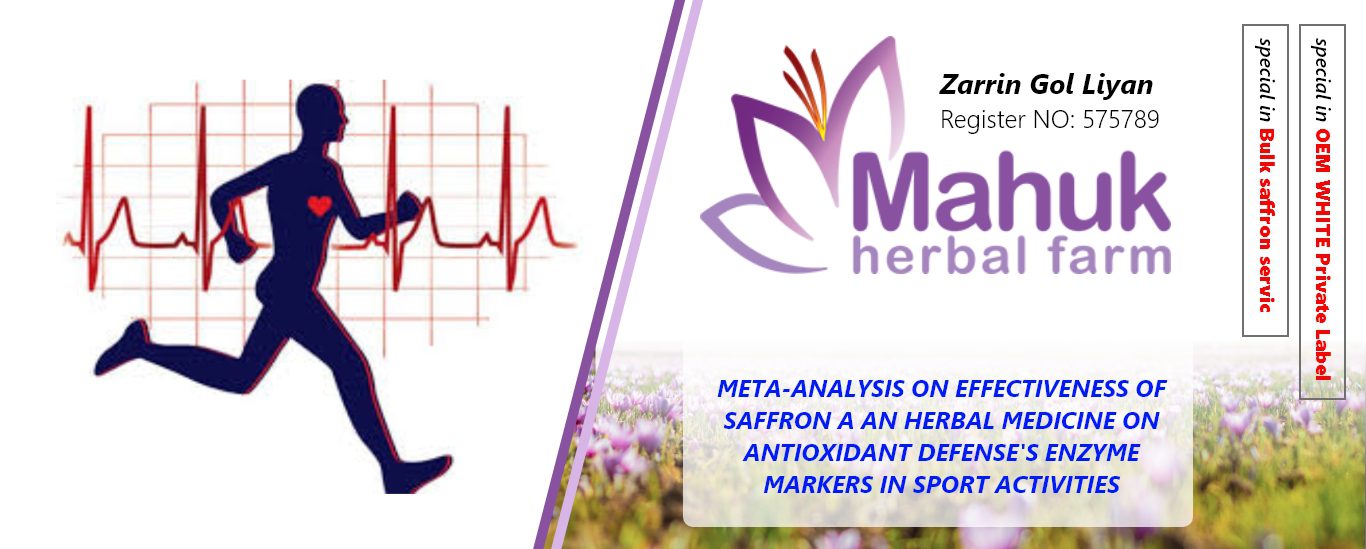

Antioxidants protect body cells against the harms caused by the activity of free radicals’ unstable molecules. Increase of oxidative stress is a result of producing large amount of oxidants and types of reactive oxygen which is created by
inflammatory extensive factors, immune cells and Epithelium. In recent studies the effectiveness of of supplementary aid mechanism with antioxidants in preventing oxidative stress caused by sport activities has been reviewed. In recent past some of the sport interventions mentioned crucial role of herbal medicine in the process of preventing oxidative stress in athletes. Herbal medicine are significant factors in supplying health and community health both as a cure and also as a preventer of diseases. Rational, reasonable and optimized utilization of these sources which are technically cheaper and simpler than chemical medicine, can help with community’s health care needs and also prevents the out going of a large amount of currency. Especially in the sport supplementary aid department which causes a large amount of currency leave the country annually, herbal supplementary can be a less expansive healthy alternative for bodybuilding supplements that are basically containing harmful chemical combinations for athletes.
The aim of present study was to perform a meta-analysis on the conflict results of several surveys about the effectiveness of saffron supplementation on enzymatic antioxidant defense biomarkers in exercise. This meta-analysis has collected results from four qualified studies. All researches were control case study (n=70) and had evaluated the effectiveness of saffron supplementation before aerobic exercise on Catalase and Superoxide Dismutase (SOD) enzymes amounts. Regard to non-significant P-value (P=0.155) in I2 index, fixed effects model has been used. The statistical analyze of research was done by Comprehensive Meta-Analysis Version 2, and the effect size was measured by Standardized Mean Difference (SMD). Generally, 10 effect sizes were observed in researches which five effect sizes were positive and five effect sizes were negative. According to the results, SMD of antioxidant enzymes in saffaron group (SMD=0.671) was significant toward control group (Confidence interval= 0.337-1.005, P=0.01), and SMD of antioxidant enzymes in saffaron+exercise group (SMD=0.77) was also significant toward control group (Confidence interval= 0.436-1.105, P=0.01). In the case of estimating antioxidant defense via Catalase, SMD in saffaron group (SMD=0.604) was significant toward control group (Confidence interval= 0.048-1.161, P=0.05), whereas SMD in saffaron+exercise group (SMD=0.243) was not significant towardcontrol group (Confidence interval= -0.302-0.789). In the case of estimating antioxidant defense via SOD, the SMD in saffaron group (SMD=1.464) was significant toward control group (Confidence interval= -0.846-2.082, P=0.01), and SMD in saffaron+exercise group (SMD=1.306) was also significant toward control group (Confidence interval= 0.705-1.908, p=0.01). Based on collecting the studies results, it can be concluded that saffron supplementation may enhance enzymatic antioxidant defense and lower exercise induced-oxidative stress. However, the most effectiveness of saffron has observed on SOD enzyme amount, whereas saffron effectiveness on exercise induced-Catalase amount was not proven in this study.



